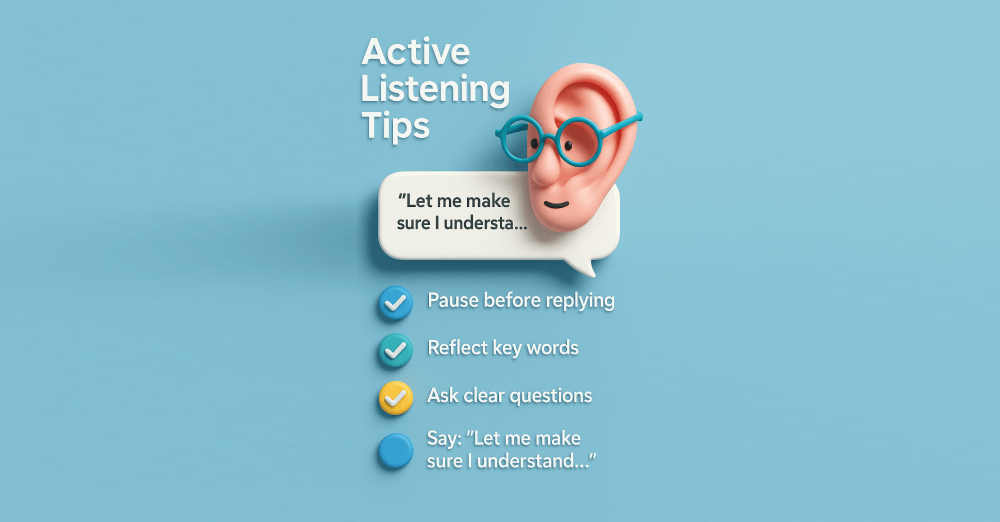Understanding customer types matters now more than ever. In 2025 over 90 % of companies track loyalty and customer satisfaction metrics. Only 5 % of business comes from new customers while 65 % of revenue comes from repeat buyers Hiver. That makes adapting to customer styles essential for growth. This article reveals how each type behaves and how to engage effectively today.

Why Understanding Customer Types Matters
Customer service is no longer generic. In 2025 companies invest heavily in loyalty programs and CRM systems that map behaviour patterns. When you recognise patterns at first contact resolution rates rise and satisfaction improves. If you treat customers as individuals not labels you reduce churn by up to 25 % and increase profits by 30 % to 95 %. Understanding types helps resolve conflict before escalation. It helps teams adapt tone and offer tailored solutions. This approach turns frustrated contacts into advocates and boosts net promoter score and lifetime value.

The Analytical Customer
The analytical customer cares about data proof and logic. They ask for detailed metrics case studies and specifications. They value transparency in trials and comparisons. Use clear sources and trusted research. Offer robust evidence and structured presentations. Explaining methodologies or citing studies wins their trust. Use tools like Graphlogic Generative AI & Conversational Platform to deliver structured evidence and data driven responses. That helps surface relevant documentation fast. Be precise. Provide side by side charts or fact tables. Analytical readers respond well to retrieval augmented generation and clear citations.
The Impulsive Buyer
Impulse buyers act quickly based on excitement or emotion. Nearly 48 % of social media users in 2025 report making impulse purchases online Stratlxcapitaloneshopping.com. They respond to flash deals social proof and urgency messaging. But post purchase support matters most. Follow up with reassurance and simple onboarding steps. Explain return policies and delivery timelines. Use automation to send clear confirmations. Use Graphlogic Text to Speech API to reinforce voice reminders or support notifications. That helps them feel supported and reduces regret. Shoppers who hear a clear follow up feel more confident and are less likely to return items.
The Bargain Hunter
Bargain hunters focus on deals and savings. Consumers in paid loyalty programs spend 12 % to 18 % more and choose that brand more often. They compare prices extensively. Transparent savings build trust. Avoid hidden fees. Show cost per benefit. Offer loyalty tier rewards or bundled discounts. Present value in quantifiable terms. Communicate cost efficiency. Show past customer feedback about pricing fairness. That builds credibility quickly.
The Loyal Customer
Loyal customers generate most profit. A 5 % increase in retention can boost profits by 25 % to 95 %. Also 77 % of consumers stay with a brand over 10 years. These customers forgive mistakes if recovery is handled well. That is the service recovery paradox. Offer exclusive previews or early access. Provide personal recognition. Use loyalty data to anticipate needs. Highlight testimonials from long term users. These steps deepen emotional connection and reinforce retention.
The Complainer
Complaining customers often offer insight. 50 % will leave after a single bad experience. Handling issues calmly can actually raise satisfaction above baseline. Listen actively without interruption. Validate emotion. Provide fast resolution and fair compensation. Explain steps and timeline. Use recovery data to track satisfaction afterwards. That turns critics into promoters.
The Indecisive Customer
These customers need guidance. Too many options confuse them. Simplify choices into two or three ranked options. Offer side by side summaries. Use real use case examples. Encourage small first steps. Reinforce that support is available. Follow up with gentle reminders. Use clear call to actions. This builds confidence over time without pressure.
The Expert Customer
Experts know product details and industry norms. Don’t oversell features they already understand. Acknowledge gaps in your knowledge. Invite their perspective. Use their feedback to improve offerings. Treat them as partners. Many expert customers become loyalty anchors if respected.
The Friendly Customer
Friendly customers focus on rapport. They respond to warmth. Use names and small talk. Ask how they found you. Keep tone natural but professional. Use personal anecdotes or notes in follow up. These interactions build genuine connection. But do not stray too far from purpose. Keep conversations both friendly and purposeful.
The Skeptical Customer
Skeptics doubt claims. They question guarantees and reviews. Use verified testimonials case study data and certificate proof. Avoid exaggeration. Show real results supported by statistics. For new tools reference satisfaction ratings or independent audits. This demographic seeks consistency over marketing hype.
The Aggressive Customer
Some customers may express anger. Always remain calm and steady. Listen without mirroring tone. State facts calmly. Offer concrete solutions and timeline. If needed pause the conversation to regroup. De escalation matters more than concession. Provide transparent next steps and confirm follow up.
The Quiet Customer
Quiet customers speak little but observe much. Encourage responses by asking simple open questions. Imagine a support survey limited to a few prompts. Give space before requesting input. Offer optional feedback mechanisms. Quiet customers often open over time. Respect their pace and show patience.
Key Strategies for Handling All Customer Types
Handling a wide range of customer types requires more than general politeness. It involves building a culture of adaptability, using practical behavioral science, and leveraging the right technologies to personalize every interaction. While each customer type needs a tailored approach, there are core strategies that work universally. These principles increase satisfaction, reduce churn, and strengthen brand trust across the board.
Practice Active Listening at Every Step
Active listening is not just about hearing the words customers say. It involves paying attention to tone, pauses, choice of words, and emotional cues. For instance, an analytical customer may say, “I need to understand the long-term impact,” which signals the need for data-backed explanations. A quiet customer might not say much at all, but their hesitation or delayed responses can still reveal discomfort or confusion.
Good active listening involves:
- Pausing before responding
- Mirroring key terms to show understanding
- Asking clarifying questions without sounding intrusive
- Using phrases like “Let me make sure I understand what you’re saying”

This method helps de-escalate frustration and make customers feel heard. Studies show that 86 % of customers are willing to pay more for better experience, and listening is a large part of that experience (pwc.com).
Be Clear, Honest, and Unscripted
Clarity is the foundation of customer trust. That means avoiding jargon, buzzwords, or scripted answers that feel empty. Customers quickly spot when they’re being read a policy versus spoken to by someone who understands and cares.
Instead of saying, “Your feedback is important to us,” say, “I’ve noted your concern about the delivery delay. We are reviewing what happened and will update you within two hours.” The second approach feels authentic and specific.
Unscripted communication also allows reps to adjust tone depending on the customer’s mood and context. For example, a friendly customer will respond well to humor, while an aggressive customer will need calm and neutral phrasing.
Use Personalization Based on Behavior, Not Just Names
Many companies personalize emails by adding the customer’s name. That is not true personalization. Meaningful personalization uses behavioral patterns, purchase history, product interest, and support history to adjust interaction quality.
For example, if a customer usually shops on Friday evenings, you can time recommendations around those hours. If they’ve previously returned a product due to unclear instructions, provide a detailed guide or video in the follow-up message. This deep level of personalization can increase response rates by up to 202 %, according to salesforce.com.
CRMs like HubSpot or Zendesk let support teams view this context in real time. But the data alone is not enough. Training staff to interpret and use that information conversationally is what turns it into effective support.

Be Flexible With Rules When Needed
Customers remember when someone breaks protocol for them in a meaningful way. A common reason customers leave is that they feel they are treated like ticket numbers rather than humans.
If your return policy is 30 days and someone reaches out on day 32 due to illness or travel, offer a one-time exception with kindness. That goodwill can turn a possible exit into a five-star review.
Set up a framework where reps are allowed to make small discretionary decisions. For instance, allow a customer care agent to refund up to $50 without needing management approval. Create guidelines for when to offer free expedited shipping or bonus points. Trusting your staff improves outcomes and reduces unnecessary escalation.

Respond Quickly With Real Updates
Speed is a competitive advantage. 82 % of customers expect an immediate response on sales or service inquiries, especially via chat or social media (hubspot.com). But speed must come with substance.
A fast reply that says “we’re looking into it” but never follows up is worse than a slower response with real resolution. Customers often value a clear and honest update over a fast scripted acknowledgment. Use proactive follow-ups at regular intervals. Even if there is no resolution yet, updating the customer that the case is still under review maintains trust.
AI-powered tools like the Graphlogic Generative AI platform can help deliver accurate updates based on previous interactions and real-time case data. That ensures consistency without generic automation.
Track the Right Metrics, Not Just Volume
High call volume does not equal success. What matters is how well issues are resolved and how satisfied customers feel afterward. Two essential metrics to track:
- First Contact Resolution (FCR): Was the issue solved the first time without escalation or recontact?
- Customer Satisfaction Score (CSAT): Did the customer feel good about the interaction?
Also useful is Net Promoter Score (NPS), which tracks loyalty likelihood. But without FCR and CSAT, NPS can be misleading. Ensure your CRM or helpdesk solution captures not just these scores but the context behind them. Break scores down by customer type and agent performance. That allows for smarter training and operational decisions.

Foster a Culture of Adaptability
Technology can only go so far. At the core of service is your team. Create a culture where agents are trained to assess personality types within seconds and adapt accordingly. Use real call reviews and pattern analysis to teach how different customers react to tone, pace, and offer type.
Run scenario-based roleplaying sessions that involve difficult and rare customer types. This keeps teams sharp. Reward flexibility and creative problem solving. Promote stories internally of when someone saved a client by doing something unexpected but aligned with company values.
When teams are empowered to tailor responses instead of follow static scripts, satisfaction improves and employee engagement increases as well.
FAQ
There are twelve groups covered here such as analytical, impulsive, bargain, loyal, skeptical, and quiet customers. Each group shows distinct preferences and behaviours that influence how they make decisions and what they expect from support.
Remain calm, listen without interrupting, validate their concern, then offer clear and fair resolution steps. Always follow up to confirm satisfaction and reinforce trust. This approach helps turn difficult interactions into long-term relationships.
Reward consistency, offer pleasant surprises, personalize communication based on previous engagement, and handle mistakes quickly. These actions strengthen emotional loyalty and keep your brand top of mind.
Study customer type behaviour closely, track feedback and satisfaction data, use active listening in all interactions, and invest in tools that allow your team to adapt communication style in real time. Consistent practice in live scenarios is also key.
Follow up reduces regret, builds confidence, and increases your net promoter score and likelihood of future referrals. This effect is especially strong with impulsive and analytical buyers who may need reassurance that their decision was correct.

